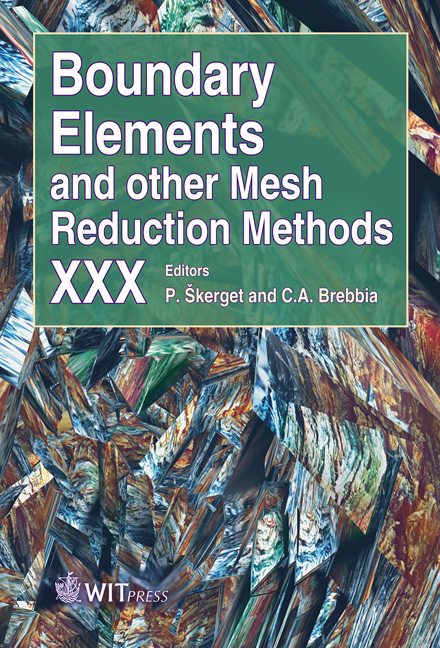Towards A Fast Single Domain – Subdomain BEM Algorithm For 3D Incompressible Fluid Flow
Price
Free (open access)
Transaction
Volume
47
Pages
9
Page Range
3 - 11
Published
2008
Size
408 kb
Paper DOI
10.2495/BE080011
Copyright
WIT Press
Author(s)
J. Ravnik, L. Skerget & Z. Zunic
Abstract
Work towards acceleration and computer memory reduction of an algorithm for the simulation of laminar viscous flows by solving of 3D velocity-vorticity formulation of the Navier–Stokes equations is presented. The algorithm employs a combination of a subdomain boundary element method (BEM) and fast single domain BEM. The single domain BEM on a Poisson type equation is employed to calculate boundary vorticity values. After discretization, the single domain BEM algorithm yields a fully populated system of linear equations. The non-homogenous part of the Poisson equation yields a fully populated matrix of domain integrals. In order to lower the computational demand, a fast multipole expansion algorithm is used on the domain matrix. The fundamental solution is expanded in terms of spherical harmonics. The computational domain and its boundary are recursively cut up forming a tree of clusters of boundary elements and domain cells. Compression is achieved in parts of the matrix, which correspond to boundary-domain cluster pairs that are admissible for expansion. Significant reduction of the complexity is achieved. The paper presents results of initial testing of the FMM algorithm. Keywords: fast multipole method, boundary element method, Poisson equation. 1 Introduction Our research group works on the application of the Boundary Element Method to fluid flow problems. Recently Ravnik et al. [1] developed a 3D subdomain - single domain BEM numerical scheme for solving incompressible velocity-vorticity formulation of Navier–Stokes equations. A crucial part of this algorithm is the calculation of boundary vorticity values. They are obtained by solving a Poisson type partial differential equation using single domain BEM. The domain integral, which arises from the non-homogenous part of the Poisson equation, requires the
Keywords
fast multipole method, boundary element method, Poisson equation.





